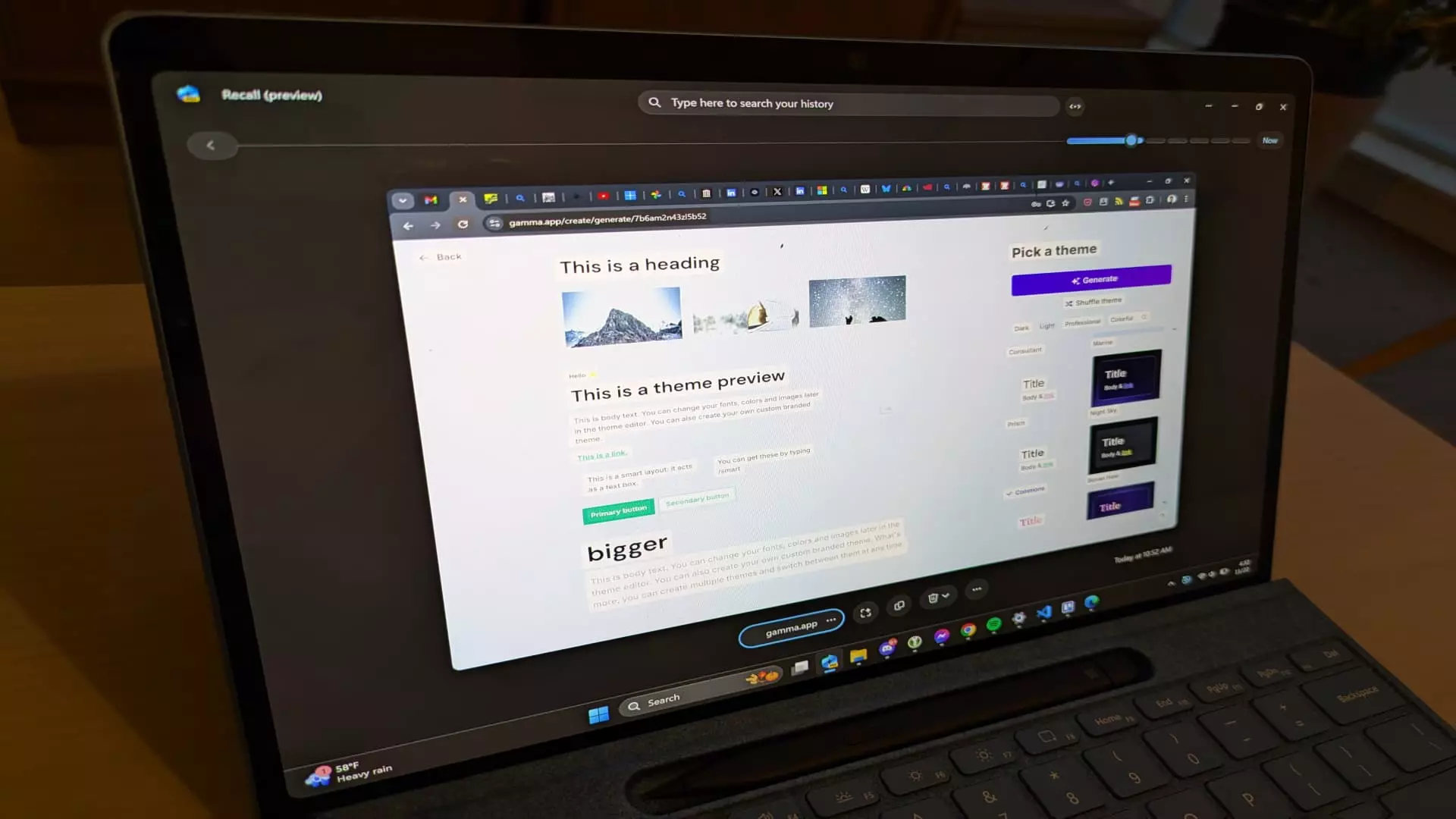In an era where digital information overload is common, tools that can enhance productivity and organization are becoming increasingly valuable. One such tool, Microsoft’s Recall feature for Copilot+ PCs, has recently entered testing. While it promises a revolutionary way to navigate one’s digital life through artificial intelligence, initial feedback indicates that it is fraught with challenges and limitations. This article delves into the intricacies of Recall, its intended purpose, and the obstacles it faces as it seeks to establish itself as an essential digital assistant.
Microsoft introduced Recall with substantial fanfare, promoting it as a “photographic memory” tool that integrates seamlessly with the latest Copilot+ PCs running Windows 11. The feature aims to utilize artificial intelligence to take screenshots of user activity, allowing individuals to later search for keywords relating to visual content they have encountered. This concept aligns perfectly with the growing need for efficiency in our increasingly convoluted digital landscapes. However, the feature’s rollout has been marred by inherent complications that raise questions about its practicality and security.
Concerns about the implications for IT security and personal privacy led Microsoft to revisit Recall’s architecture before its rollout. Cybersecurity experts warned about the potential misuse of such an omnipresent memory tool, which could inadvertently compromise sensitive information. In response, Microsoft made adjustments by encrypting Recall’s underlying database and ensuring it remains off by default, allowing users to opt-in only after considering the risks. This proactive step demonstrates a degree of responsiveness on Microsoft’s part, but the hesitations surrounding Recall highlight the constant balancing act tech companies must perform between innovation and user safety.
Currently, Recall is limited to users of select Copilot+ PCs equipped with Qualcomm Snapdragon chips and neural processing capabilities. This technical requirement excludes a significant number of potential users employing AMD and Intel processors, restricting Recall’s implementation within a niche category of devices. Additionally, to participate in the testing process, users must enroll in the Windows Insider Program, which may deter casual users who lack the technical expertise or willingness to engage in pre-release software trials.
Despite its innovative premise, the implementation of Recall has revealed several shortcomings during initial evaluations. For instance, while users may believe that Recall actively records all screen activity once enabled, it can take several minutes between automated screenshots, resulting in gaps within the timeline. Furthermore, not all applications are compatible with Recall’s screenshot feature, limiting its utility depending on individual workflows.
The search functionality, which seems to be Recall’s most engaging feature, has also proven to be less reliable than expected. Users have reported inconsistencies where relevant keywords fail to yield complete results—leading to frustration when trying to locate specific images or text. In one instance, a user’s search for their last name, present in multiple images, yielded only a fraction of what was actually available. Such discrepancies highlight the challenge of ensuring the accuracy of AI-powered search algorithms, particularly in dynamic online environments where content is fluid.
While searching for images or text may be swift within Recall, the process of navigating through screens can be sluggish. The delay in loading snapshots while scrolling through history detracts from the user experience, particularly for those accustomed to seamless interactions with technology. This paradox between query speed and user interface responsiveness presents a critical area for Microsoft to address in future updates.
Microsoft’s Recall feature has ambitious goals, aiming to redefine how users interact with their digital ecosystem. Although it offers intriguing capabilities, the execution has been riddled with hurdles that must be cleared for it to gain traction among users. Microsoft must prioritize enhancing accuracy, expanding device compatibility, and optimizing user experience in order to turn Recall from a promising concept into an indispensable tool. While the technology landscape continues to evolve, the success of Recall could signify a pivotal moment in how we manage and recall our digital interactions.


Leave a Reply